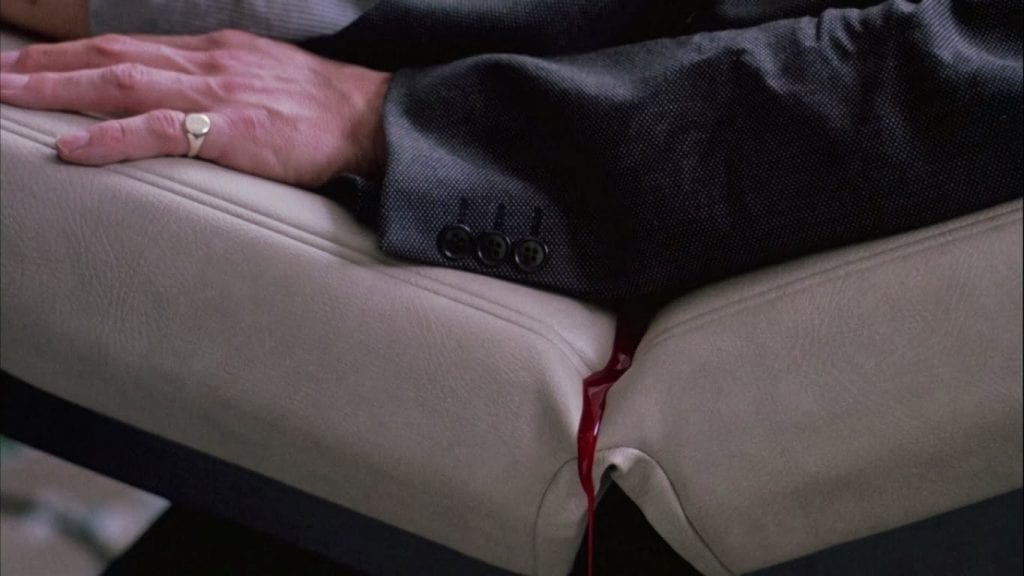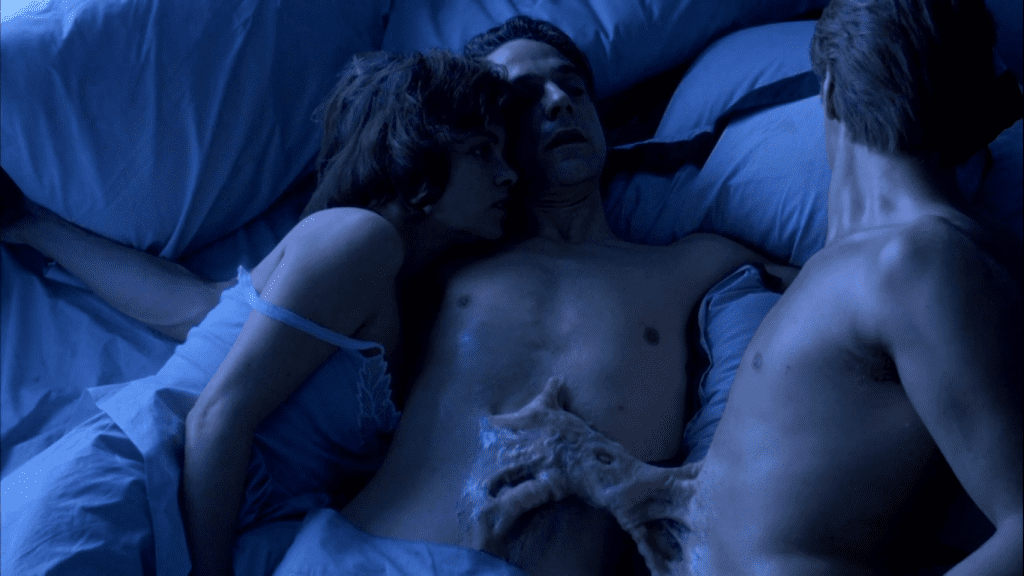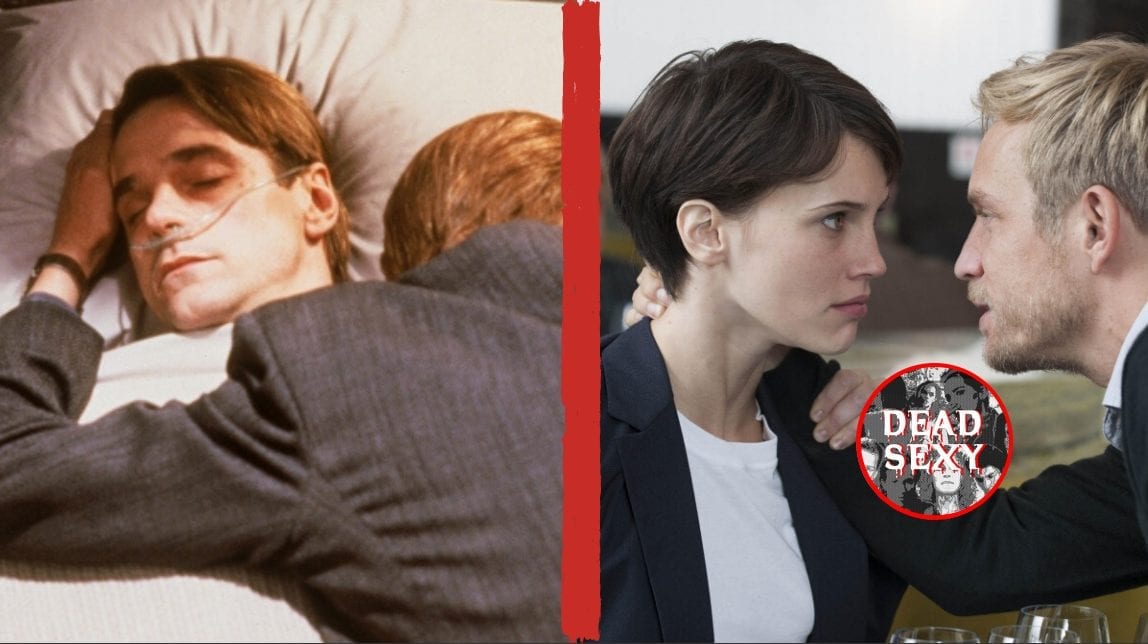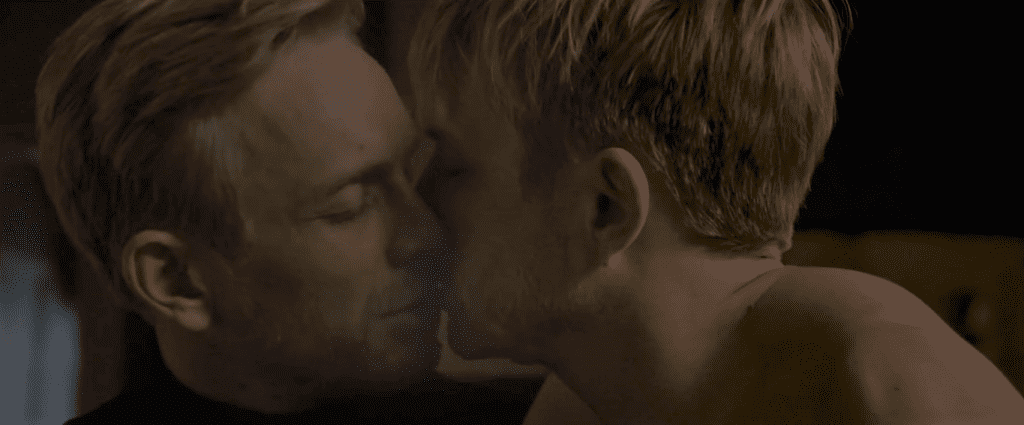Dead Sexy: A Fortnightly Column on Erotic Thrillers
The depiction of twins in cinema is often horrifying—and no, I’m not talking about the 1988 movie starring Danny Devito and Arnold Schwarzenegger.
“Come play with us,” whisper the Grady twins in The Shining, a ghostly apparition designed to terrify the young Danny Torrance. In Brian De Palma’s early slasher film Sisters, psychological breakdowns ensue between Siamese twins who “the older they become, the more precarious is their psychological balance.” But, with the erotic thriller genre often going a step, or measured leap, further than other genres, this idea of twinship has been interrogated more sharply. In both David Cronenberg’s Dead Ringers and François Ozon’s Double Lover, twins are used as a metaphor to probe into issues of psychosexuality, incest and body horror.
When Double Lover begins, you’re not quite sure at first what you’re looking at. The camera is in extreme close-up, focusing on something fleshlike. As it gently zooms out, after an initial “wait, is that—”, it’s unmistakable: the film opens on an extreme close-up of a woman’s vagina, before fading into an eye. Dead Ringers, too, contains the prodding, probing and examining of a body within the first five minutes, with a woman having her genitals examined at a doctor’s practice. Both films establish a gynaecological fascination as their focal point at the very start.
Soon, we see that they’re both concerned with twins, too. In Dead Ringers, the plot follows twin gynaecologists Beverly and Elliott Mantle (Jeremy Irons) who often have sex with the same women, unbeknownst to their conquests. When Beverly goes against tradition and falls in love with one of the women, however, the twins become increasingly dependent upon and possessive of each other. After a spiral of psychotic breakdowns, believing themselves to have a shared psyche, the film ends with Beverly disemboweling Elliott in a drug-induced stupor. Double Lover concerns Chloe (Marine Vacth), a fragile young gamine with unidentified abdominal pain (hence her aforementioned visit to the gynaecologist), who embarks on an affair with both her therapist and his twin brother behind his back. Driven to psychological torment by her lovers’ secrecy and deception, her mysterious pain is discovered to be not a pregnancy as she thought, but a parasitic twin, which bursts out of her stomach at the film’s climax.

The idea of twin incest—twincest—isn’t new to critical theory, literature or cinema. Think of the Macauley twins in Donna Tartt’s The Secret History, Jaime and Cersei Lannister in Game of Thrones, or even further back to the odd sibling desire present in Renaissance plays from The Duchess of Malfi to Tis Pity She’s a Whore. It’s by no means a new idea, but one that is revisited afresh by Cronenberg and Ozon. The protagonists in Dead Ringers and Double Lover cover both sides of the psychosexual coin: the Meyer twins are therapists (psycho-), the Mantle twins are gynaecologists (-sexual). Both twins work in identical occupations and have sex with the same woman, effectively fucking each other. And, more explicitly, both films feature ‘dream’ scenes in which the twins are engaging in a threesome with each other and a third party; in both scenes, directors Cronenberg and Ozon opt for skin-crawling body horror to stress the ‘wrongness’ of what we’re seeing.
David Cronenberg has long established his fascination with body horror. In eXistenZ, humans connect a wrinkled, womb-like object into their bodies via an umbilical cord-esque port. In Crash, a group of symphorophiliacs are fascinated by body wounds, and one character penetrates one wound shaped unmistakably like a vulva. In The Fly… you get the picture. Even the ‘natural’ depiction of bodies in Dead Ringers is rendered as scary; the opening credits suggest as much, with frightening Renaissance-era medical drawings of foetuses, wombs, scalpels, speculums and monstrous gargoyles. The body horror of Dead Ringers appears in dream sequences, where Beverly envisions himself in bed with both his lover and brother whilst connected to his twin by a web of skinlike, grotesque fibres. This scene is mirrored in Double Lover, but instead, we’re from the perspective of Chloé; she dreams that she is in passionate coitus with both twins, and it is her body that morphs, with two heads and a fused bust.

In these two films, twinship is presented as a series of binary opposites: Beverly Mantle is shy and nebbish whereas Elliott Mantle is headstrong and cruel; Paul Meyer is kind and gentle whereas Louis Meyer is a rough brute. Chloe, then, is presented as half a person—she is lonely, unfulfilled and constantly searching for something out of reach, with Paul fulfilling her emotional needs and Louis catering to her sexual ones. She is either shot with multitude of space in the frame, like something is missing, or in extreme close-ups, isolating body parts relating to her psychosexuality (eyes, genitals, lips). When it’s finally revealed that the mystery illness that has been haunting Chloe is not in fact pregnancy or miscarriage but a parasitic twin (an identical twin that has stopped developing during gestation, but is physically attached to the fully developing twin), it changes the way we look at her sexual dalliances with the Meyer twins, adding fuel to the already well-lit psychosexual fire.
Though the Mantle twins are different, it’s a shared obsession with female genitalia that binds them together. When Elliott says, wistfully, “I’ve often thought that there should be beauty contests for the insides of bodies,” he isn’t making a statement about inner beauty and our souls, but literally our internal body parts. They obsess over a patient’s trifurcated cervix and commission their own gynaecological instruments to use as a sort of shared language; their resultant madness is apt considering the origin of the word ‘hysteria’ being derived from the Greek for ‘uterus’. When Beverly’s lover Claire begins to notice the twins’ unhealthy closeness, she says “I can separate you,” triggering the crisis that would go on to be their downfall. Beverly is furious with Claire’s meddling: “What are you trying to suggest? That I’m gay? My mother wanted girls? What the fuck is the bullshit psychoanalysis?” The sonic similarity between Mantle/mental, as well as their feminized nicknames for each other (“Bev” and “Ellie”), trigger a whole host of Freudian ideologies.
What sets these two films apart from the typical ‘erotic thriller’ formula are their shared refusal to titillate. Whereas the genre typically features a stereotypically hot protagonist, Double Lover makes a statement in its first scene with Chloe’s long hair being cut short and her wardrobe being consciously nondescript (Marine Vacth is still beautiful, but Ozon does try to make her look as sickly as possible). At 46, Dead Ringers‘ love interest Geneviève Bujold was actually older than Jeremy Irons, a refreshing change from the typical erotic thriller where we have to watch a woman naked for someone old enough to be her dad. And, of course, there’s the body horror, which is possibly the most explicit tool one can use to incur abhorrence as opposed to arousal.
Though the bold visual style of Dead Ringers makes it a more interesting watch than the more austere palette of the less original Double Lover, both films are fascinating to watch together as daring entries to the erotic thriller genre.
Words by Steph Green
Part of Dead Sexy: A Fortnightly Column on Erotic Thrillers
Sign up to receive email alerts when a new column is live
Watch Dead Ringers on BFI Player
Watch Double Lover on Curzon Home Cinema
Recommended reading
‣Phallic Panic: male hysteria and Dead Ringers by Barbara Creed
‣Marine Vacth: unscreened and uncut, DAZED
‣Dead Ringers, The Art of the Title


